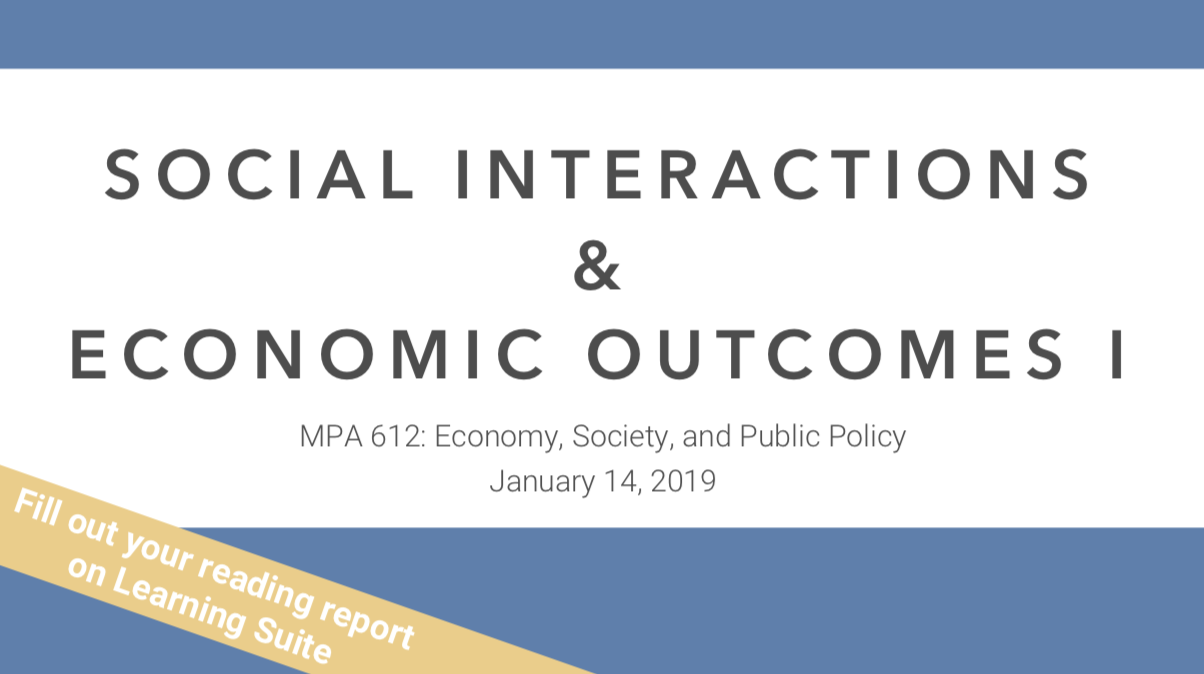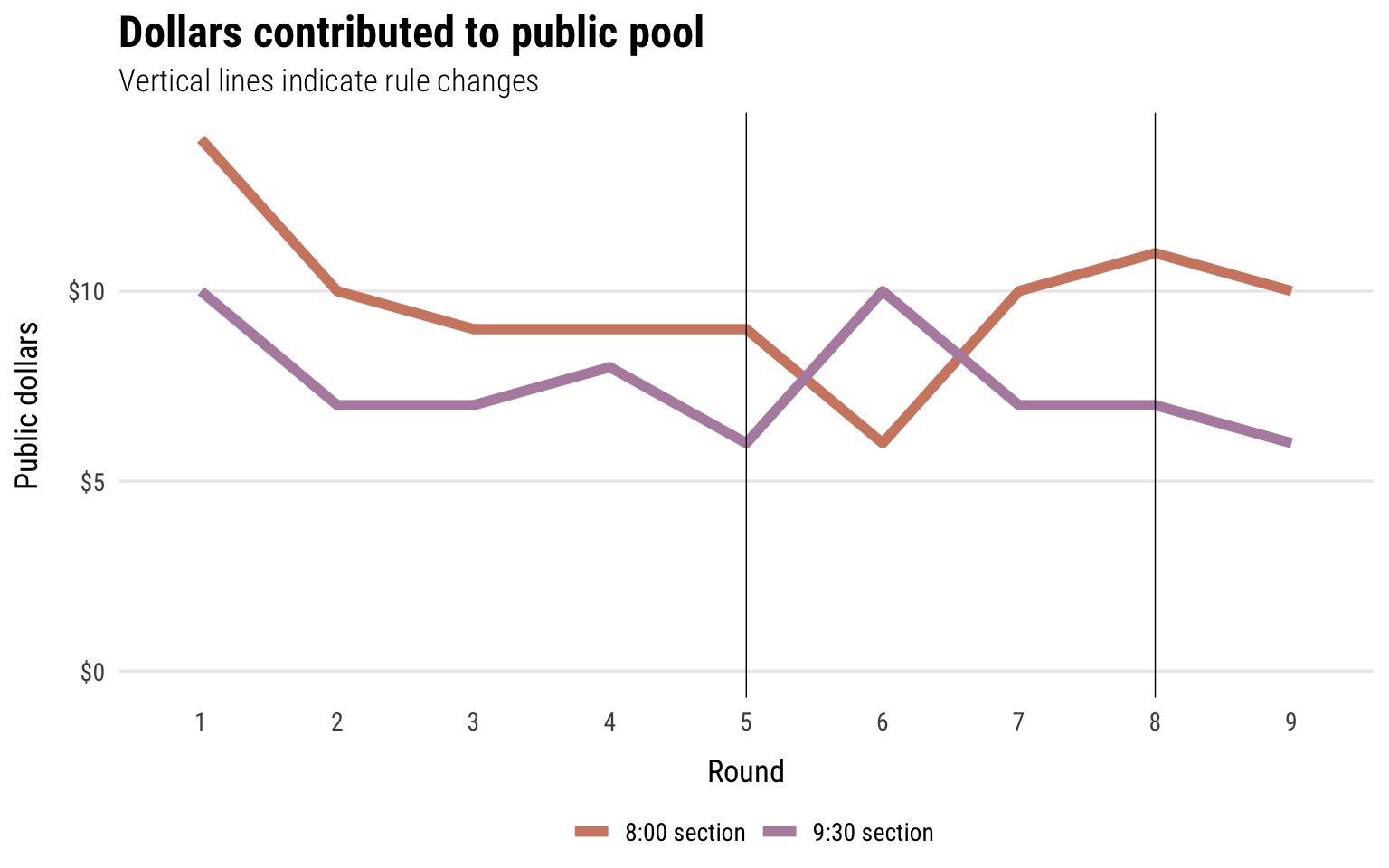Social interactions and economic outcomes I
Materials for class on Monday, January 14, 2019
Contents
Slides
Download the slides from today’s lecture.

Public goods game results
This game is based on Charles A. Holt and Susan K. Laury “Classroom Games: Voluntary Provision of a Public Good,” Journal of Economic Perspectives 11, nos. 4, Fall (1997): 209–15, doi:10.1257/jep.11.4.209.
Contributions to the public pool decreased fairly rapidly after the first round when you noticed how much free-riding had occurred. Shifting rules later on didn’t do much to change the equilibrium of the game. In both sections, changing the value of a kept red card to $8 in round 5 didn’t really change the average contribution, and changing the value of a kept red card to $10 and a public red card to $2 in round 8 had diverging results. In the 8 AM section, more people contributed to the public pool; in the 9:30 section, more people kept their red cards.

Clearest and muddiest things
Go to this form and answer these three questions:
- What was the muddiest thing from class today? What are you still wondering about?
- What was the clearest thing from class today?
- What was the most exciting thing you learned?
I’ll compile the questions and send out answers after class.